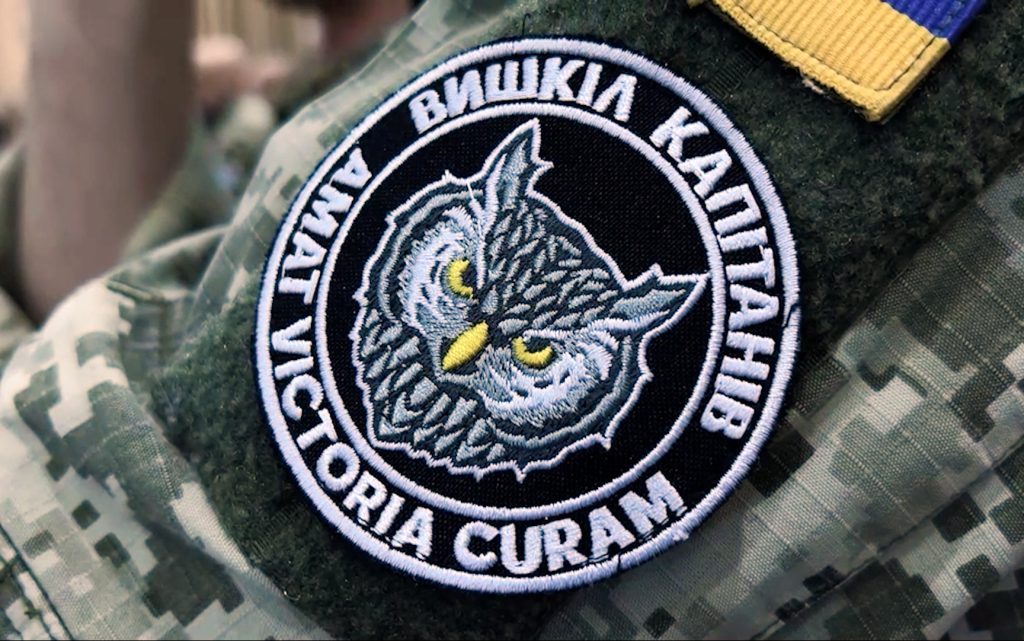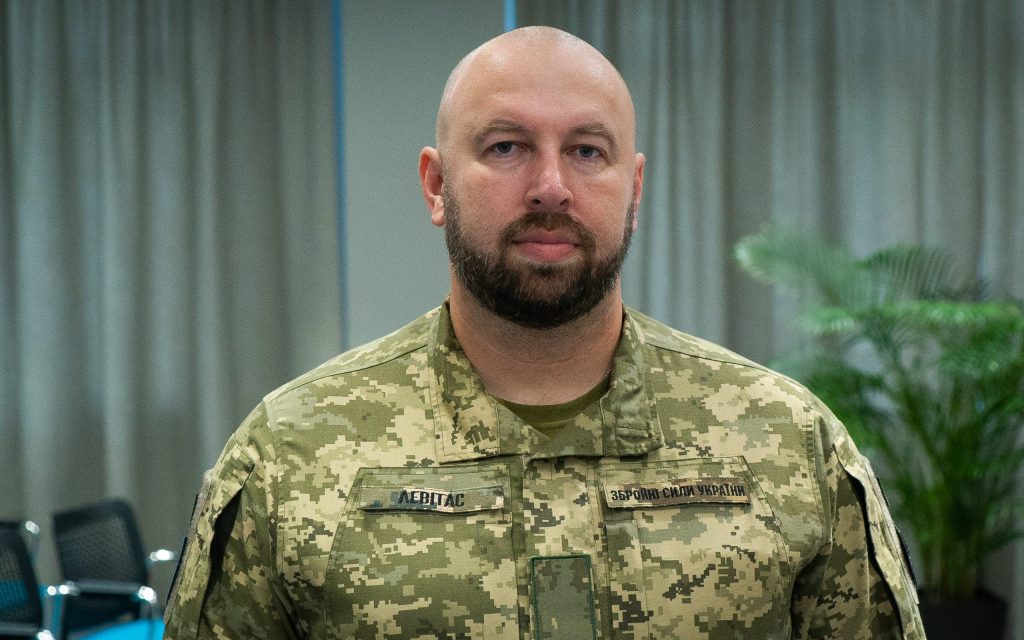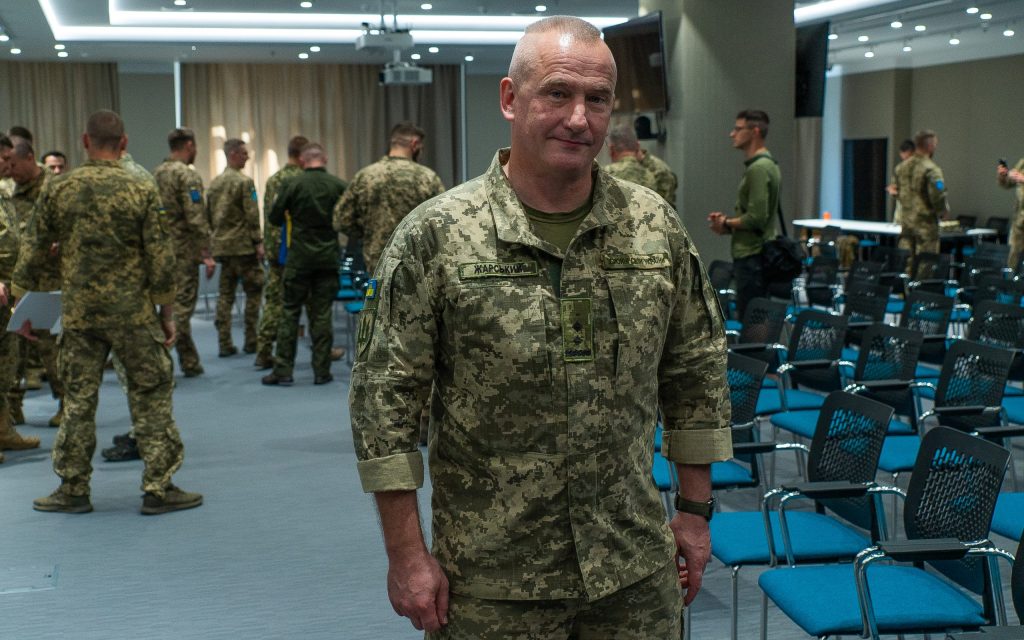"In times of war, we cannot train people for years. 'Captains' Training is about the here and now, but with high quality"

On September 23, 112 servicemen completed the fifth course of the “Captains’ Training” for the Territorial Defense Forces of the Ukrainian Armed Forces.
The course was developed based on the standards of NATO armies and the experience of the russian-ukrainian war. The project started in the end of last year. Since then, 468 company, platoon and battalion staff officers have been trained under its program. In particular, 29 representatives of the National Guard, eight of the Air Assault Forces, and the rest are officers of the Territorial Defense Forces.
The Ukrainian Armed Forces Territorial Defense Command is implementing the training course jointly with Come Back Alive, with the support of Genesis, SKELAR – a multi-product IT company, as well as Headway, appflame, AMO, and Universe.
“At the beginning of the full-scale invasion, we faced the fact that the commanders appointed to the Territorial Defense forces were not professional military personnel, they had mostly civilian backgrounds. We needed to train leaders who could plan combat operations as quickly as possible. That’s how the idea of the Captains’ Training came about,” says Tetiana, the course’s operational director, call sign “Femida.” “We lacked the resources to implement it. We are grateful to “Come Back Alive” for their quick response and assistance.”
The course lasts for 8 weeks. It involves the study of military theory, leadership, unit management, battle planning procedures, and analysis of actions.
The program is updated with each graduation, mostly based on the feedback of the students.
There are no lectures at The Training Course. Students receive the materials they need to study before class, and they engage in discussions during the lessons.
One of the principles of the course is peer-to-peer teaching. The instructors are former company commanders with combat experience who have been trained in the UK and teach the material to current commanders.
Each instructor is assigned to a separate group. They teach the same amount of information, but in different ways.Therefore, people from the same unit who study in different groups gain more experience when they return to their units.
Each group must have representatives from the four regional departments and different levels, but no officers with direct subordination. For example, a platoon commander and his superior are not trained together. This allows students to express their opinions frankly. Each group is formed in such a way that both officers with and without combat experience study in it.
“We are forming a community of graduates. Instructors keep in touch with them, share new information. We conduct surveys to find out how their lives have changed after the Training Course, what they have used in practice and what they have not. Some of the students have already become battalion commanders,” says Tetiana.
“The Captains’ School is one of the most effective and synergistic training projects of the Foundation,” says Taras Chmut, director of the Come Back Alive foundation. “The course, launched by the Territorial Defense Forces of the Armed Forces of Ukraine together with us and with the support of business, is a unique combination of the necessary knowledge and skills for company commanders and battalion combat management officers with the best Western practices. Everyone involved with the Training highly value the program of the course and the teachers. They have managed to combine what is needed for war with the basics that a commander needs to know, rejecting Soviet rudiments, superfluous or secondary. The project gives the maximum effect in terms of the money invested and the result obtained. In times of war, we cannot afford to train people for months or years. The Captains’ Training program is about the here and now, but in a high-quality manner.”

Hennadiy Levitas, second lieutenant and commander of the rifle company of the 112th Brigade of the Ukrainian Armed Forces’ Territorial Defense Forces, came to the Captains’ School because he felt he had gaps in his military knowledge:
– “Before the full-scale invasion, I had no military experience. I was engaged in business, taught PR in tourism and image studies at the Kyiv University of Tourism, Economics and Law. I joined the ranks of the Territorial Defense Force as a volunteer in December 2021. I was persuaded by a neighbor. He is now a commander in another battalion. We gathered a group of about forty people and trained. We realized that it was better to prepare for war than to run around and shout “help” later.
On February 24, we immediately started working. We had equipment, deployed communications and joined the battalion together. I served as the company’s chief sergeant. We were involved in stabilization operations in Kyiv. The situation was changing every hour, and we tried to keep up.
I gained my first combat experience last year in May in the Kharkiv region. Our company was holding defense in an almost deserted village. The enemy was about four kilometers away. We were holding back their advance. We had to intercept and destroy the occupiers’ columns if they moved in our direction. There we received a baptism of fire. We had never heard a mortar or 152-millimeter shell explode nearby before. We were at the position for over three months.
Our company spent this spring on the outskirts of Bakhmut. That’s when I became the company commander. Later we joined the battalion near Ivanivske. The enemy tried to cut the road connecting our Defense Forces with the city.
We have to fight head on, not soldier against soldier or tank against tank
After “The Training” I realized that I should not underestimate my own civilian experience, because it is valuable for the army as well. The territorial defense forces are great in terms of the intellectual component. It brings together people who were successful in their professions in civilian life. They volunteered to defend the country in the first hours of the invasion, and their experience and knowledge are very useful. There are IT and logistics specialists whose talents were needed in the army. We have to fight head-on, not soldier against soldier or tank against tank. The enemy has much more resources, so we have to inflict maximum losses on the occupiers remotely and protect our personnel. For example, the unit is currently working on the development of strike drones. We purchased the equipment thanks to the support of our community.
After the training, I became more confident in my knowledge and actions. It was valuable to exchange experience with commanders of other units. Some processes in my company turned out to be unique and interesting for others. War is different in terms of geography, time, and nature. A year ago, and even yesterday, it was completely different than today. Therefore, the exchange of experience prepares us for real events.

Lieutenant Colonel, Battalion Commander of the 101st Brigade of the Territorial Defense Forces of the Armed Forces of Ukraine, Oleksandr Zharskyi first joined the army in 1985. His specialization is tactical aviation navigator. He retired from the Armed Forces in 1998 with the rank of major. He received a pedagogical degree and taught Spanish and English at private language schools, Luhansk Taras Shevchenko National University and Mukachevo Military Lyceum. Oleksandr officially joined the Armed Forces for the second time on February 21, 2022. He decided to take the “Captain’s School” because he needed different training, as he had never served in the infantry:
– Before the full-scale invasion, I joined the army as a managerial position in an intelligence unit in the structure of the Territorial Defense Forces. I wanted to return to aviation, but I had a 20-year break, and given the technological nature of the process, this does not make me a professional.
In aviation, an officer is an individual fighter. He is responsible for himself and several people of the same level of training and rank. Usually, there is no need to lead, only to make decisions and act in a coordinated manner. In the infantry, there is more management. You have to manage a lot of people, and not all of them have professional training. When the Territorial Defense Forces were formed, 99% of its members had no idea about military service.
When the Anti-Terrorist Defense was formed, 99% of its members had no idea about military service
Last year, in May, after rehabilitation, I joined a reserve battalion, and from there in August I joined the battalion I am honored to lead now. At first I was a deputy commander, responsible for combat training. At the time, the unit was recovering from a mission in the Izyum area.
Our first battle together was in the direction of Popasna near Komyshuvakha. It was the first time in this war that “wagners” appeared. It was difficult. The enemy had an advantage in artillery. The occupiers not only dominated, but destroyed everything in front of them.
After the recovery, we were in the Donetsk sector for a couple of weeks. Then we took part in the Kharkiv offensive. We advanced rapidly during the week. We pushed the remnants of the occupiers nine kilometers from the border into the gray zone and took control of the rest of the territory in a month. We stood on the border until December, when we were moved to the second line. Two weeks later, we took part in the Bakhmut operation. We performed tasks as part of the Adam joint tactical group near Klishchiyivka. Now we are standing on the northeastern border.
I became a battalion commander in the winter. My biggest fear is to let my men down. This is what everything is based on.
“Captains’ training” is useful and necessary. It may sound crazy, but war is something like a production. There is a technological map, safety measures, and standards that increase your efficiency. I am here to learn about the technology of war.
The instructors have a high-quality approach to their work. They look at what we do, what goes well, and what needs to be changed. At the Training, they train us in the direction in which a person should think. The program includes the Troop Leading Procedure, and the Military Decision Making Process.
The course cuts off the secondary and concentrates on the main thing
The course cuts out the secondary and concentrates on the main thing. I’ve already sent people from my battalion to the course and I’m planning to do so again. We need to speak the same language with them, and not finger-point to show them the meaning of this or that element. After the training, it will be easier for me to talk to both my subordinates and the higher-ups, where there are many officers with specialized education.
“The students and the Command of the Ukrainian Defense Forces are satisfied with the results of the Captain’s Training. Therefore, we aim to expand and scale the course,” says Maksym Zinchuk, coordinator of the Come Back Alive executive office and project manager.
You can support the “Captains’ Training” by following the link: cutt.ly/V3VY5YP or by transferring a donation to a separate account of the Foundation: UA12322669000002600530290596